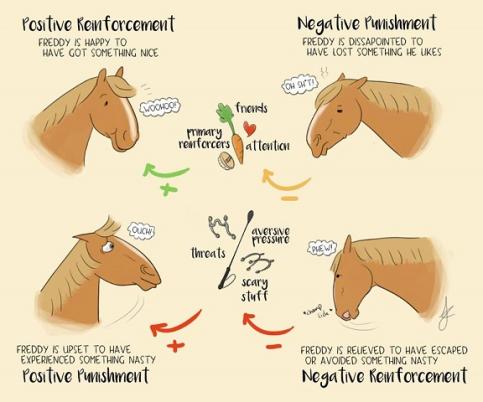Background
One of the most central relationships in animals and humans is the attachment bond between mother and offspring. An attachment bond is characterised by that the offspring seek proximity to its caregiver and consider its caregiver as a:
• Safe haven: the absence of a caregiver alters physiological and behavioural changes in the offspring, such as elevated heart rate and distress.
• Secure base: the offspring dares to explore and play in the presence of the caregiver.
In many ways, the care that a human provides to its animal resembles the care that a mother takes of its offspring, e.g. providing food and shelter. There are studies suggesting an existing attachment bond between owner and their dog as well as owner and their cat. Regarding horses there are few studies, to my knowledge, performed. Most studies that investigate human-horse relationship do not study the horse behaviour, but rather constitutes of the owner’s idea of the relationship to their horse. One study observing the horse behaviour in a novel object test showed that the horse did not differ in time of approaching a novel object regardless of being led by its owner or a stranger, indicating that the horse does not consider its owner as a safe haven. This study also mention that it did not include factors such as time the owner has owned the horse or training style used by the owner.
When considering training style as plausible effect on the attachment bond, one must first understand the underlying mechanisms of learning theory. When training animals, the main goal is usually to reinforce wanted behaviours in order to shape the outcome. This can be achieved by using either negative reinforcement and/or positive reinforcement. Negative reinforcement refers to the removal of an aversive stimulus when the animal performs the wanted behaviour. Positive reinforcement refers to the addition of an appetitive stimulus when the animal performs the wanted behaviour. In the equestrian community, there is a wide variety of different training philosophies, mainly focusing on using negative reinforcement. Studies comparing the differences between the two training styles (positive vs negative reinforcement) have shown that horses trained with positive reinforcement showed a positive attitude (e.g. relaxed posture, ears forward, motivated to train and to stay close) towards humans, both towards the trainer and a stranger. The positive attitude also persisted up to 8 months after the first training session regardless if it was the familiar trainer or a stranger. Fureix et al. (2009) speculate that horses might have a general perception of humans based on previous experience. McLean (2005) further discusses that negative reinforcement can still be an efficient method, but it requires that the trainer is consequent and precise on removing aversive stimuli as soon as the horse performs the wanted behaviour. Nonetheless, positive reinforcement often implicates the use of food or treats as appetitive stimulus which may have a positive impact on the relationship.
Aim
- To investigate if the horse displays any attachment-like behaviour towards the owner.
- If training style and owner attachment style have an impact on the relationship.
Responsible for this page:
Director of undergraduate studies Biology
Last updated:
06/09/19

